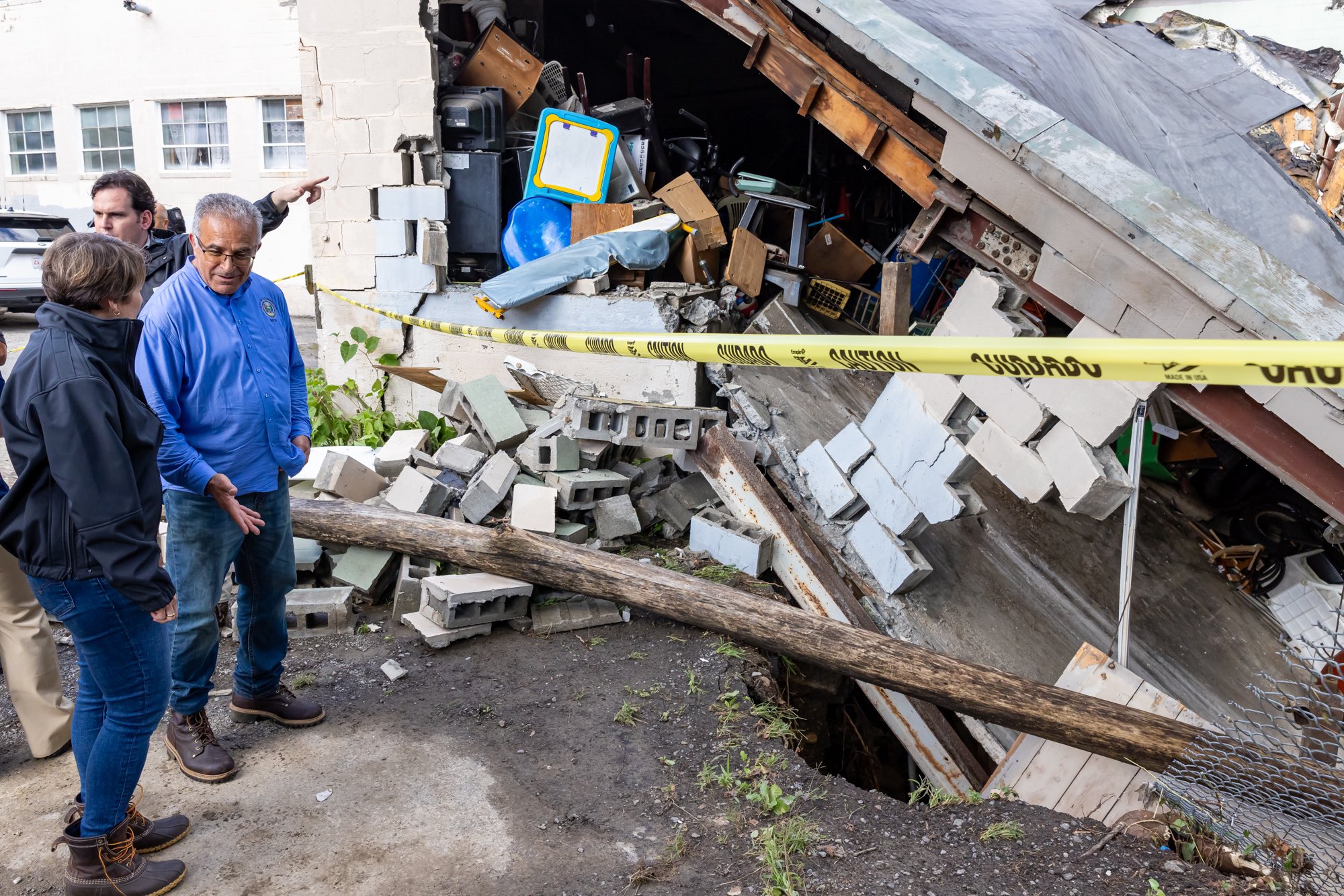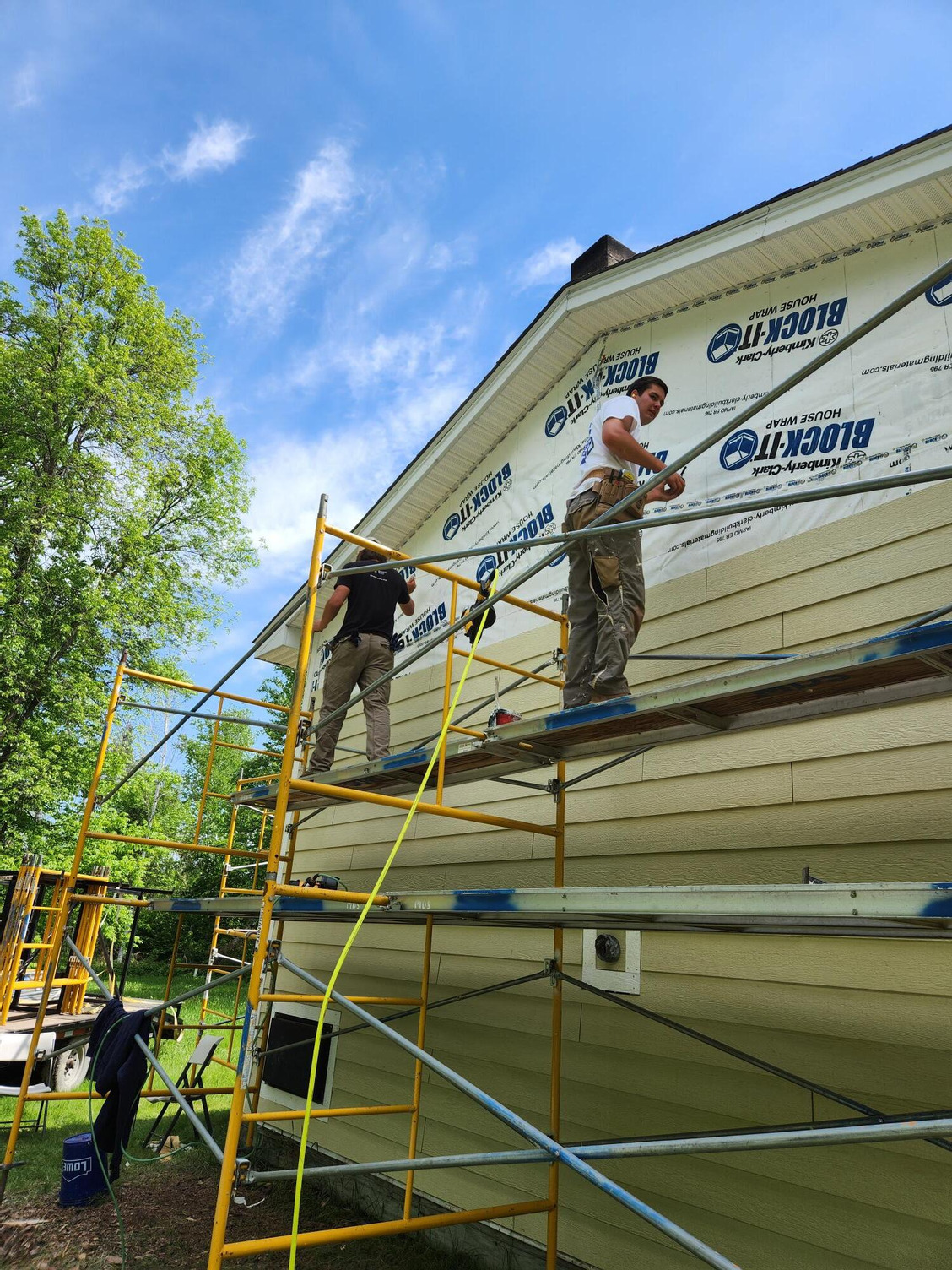What we’re watching: Weekly disaster update, September 18

We know all too well that disaster can strike anytime, anywhere in the world. Some disasters make headlines; others do not. Here at the Center for Disaster Philanthropy (CDP), we monitor the status of disasters worldwide and compile a list of the ones we’re tracking weekly, along with relevant disaster-related media coverage.
Here’s what we’re watching for the week of Sept. 18, 2023.
New or Emerging Disasters
Hurricane – U.S. Northeast and Canada: Hurricane Lee grew from Category 1 to Category 5 in just one day on Sept. 7. It was the first Category 5 storm of the 2023 Atlantic Hurricane Season. Maine saw its first hurricane watch in nearly 15 years.
Lee made landfall on Sept. 16 as a post-tropical cyclone about 135 miles west of Halifax, the capital of Nova Scotia.
The storm affected a large portion of New England and Maritime Canada with damaging winds and heavy rains that knocked down trees, flooded roadways and cut power to tens of thousands. One person was killed in Searsport, Maine, after a tree limb fell on their vehicle on U.S. Highway 1.
Maine Governor Janet Mills suspended the state of emergency on Sept. 17, and power was being restored to most customers.
For more, see our 2023 Atlantic Hurricane Season disaster profile.
Floods – Massachusetts: Nearly 10 inches of rainfall in six hours flooded parts of Massachusetts and Rhode Island on Sept. 12, with two communities declaring a state of emergency. Up to 300 people were evacuated in Leominster, about 40 miles northwest of Boston. Leominster’s mayor said the city had not seen such damage since a hurricane in 1936. About 200 homes and businesses in Leominster were damaged by the floodwaters.
Landslide – Democratic Republic of Congo (DRC): Heavy rains in northwestern DRC caused a landslide that killed at least 17 people, according to authorities on Sept. 17. The death toll is expected to rise as rescuers search through debris. The disaster occurred in the town of Lisal in Mongala province.
A UN climate expert told Al Jazeera, “Poverty and poor infrastructure have made communities in such areas more vulnerable to extreme weather such as heavy rains, which are becoming more frequent and intense in Africa due to climate change.”
Previous/Ongoing Disasters
Earthquake – Morocco: The Sept. 8 magnitude 6.8 earthquake that shook the High Atlas Mountains was the strongest to hit Morocco in at least 120 years. On Sept. 12, state television reported the earthquake’s death toll had risen to 2,901, while the number of people injured stood at 5,530.
The most affected provinces are al-Haouz, Azilal, Chichaoua, Marrakesh, Ouarzazate and Taroudant. In their analysis released on Sept. 14, ACAPS described how the earthquake mainly affected remote mountainous villages. Survivors are sheltering in public facilities, with many choosing to sleep outdoors. The Ministry of Education said the earthquake damaged 530 schools. Many historic buildings also suffered damage.
Moroccan authorities are leading the response efforts. Rather than issuing a call for international assistance, the country has been selective in the aid it has allowed into the country.
Professor Sylvie Brunel at Paris-Sorbonne University, former president of Action Against Hunger, told Le Figaro, “Rabat wants to show that it is sovereign, capable of managing relief, and not behave like a poor country…”
For more, see our 2023 Morocco Earthquake disaster profile.
Floods – Libya: Mediterranean Storm Daniel passed through eastern Libya over the weekend of Sept. 9, bringing heavy rainfall and flooding that resulted in large-scale destruction. The unprecedented flooding has left 3,958 people dead, according to the World Health Organization, and more than 9,000 remain missing. However, figures vary, and the Libyan Red Crescent reported 11,300 dead on Sept. 14.
The UN Office for the Coordination of Humanitarian Affairs (UNOCHA) said on Sept. 16, “The humanitarian situation remains particularly grim in Derna, where urgent multi-sectoral assistance is required to save lives and ease suffering.”
On Sept. 14, UNOCHA and humanitarian partners launched a Flash Appeal requesting $71.4 million to respond to the urgent needs of 250,000 people.
Libya’s disaster vulnerability is increased by its political conflict, which has seen a power struggle between two rival administrations. In addition to a lack of maintenance of public infrastructure, authorities’ reactiveness is partially blamed for the disaster. Both administrations called for an urgent inquiry into the floods.
For more, see our 2023 Libya Floods disaster profile.
In addition to the disasters listed above, we actively monitor the following disasters or humanitarian emergencies. For more information, see the relevant disaster profiles, which are updated regularly.
- Horn of Africa Hunger Crisis
- 2023 North American Wildfires
- Sudan Humanitarian Crisis
- 2023 US Tornadoes
- 2023 Turkey-Syria Earthquake
- Ukraine Humanitarian Crisis
U.S. Midwest Low-Attention Disasters
The Midwest is regularly faced with low-attention disasters that affect people across the region. CDP’s Midwest Early Recovery Fund (ERF) effectively funds efforts that catalyze equitable disaster recovery.
These are some of the latest disasters and related news the ERF team is monitoring:
- The Hermosa, South Dakota, area received heavy rains that downed trees, damaged buildings and washed out roads.
- A stationary railcar exploded at Union Pacific’s Bailey Yard in North Platte, Nebraska, on Sept. 14. The railcar contained a toxic chemical called perchloric acid. Evacuations were ordered and later lifted. Authorities said they do not expect any lingering problems from the explosion.
Complex Humanitarian Emergencies – Central African Republic
Many places worldwide are experiencing emergencies caused by conflict, climate change, drought, famine, economic challenges and other conditions that combine to create a complex humanitarian emergency (CHE). CDP maintains complete profiles on several CHEs, and what CDP considers Level 1 CHEs are profiled in this weekly blog post and tracked
Central African Republic (CAR) faces a humanitarian crisis, with 2.4 million people needing assistance. This month, Mohamed Ag Ayoya, deputy special representative for the UN peacekeeping mission in the country, said CAR “is not just a humanitarian crisis, it’s also actually a protection and a gender crisis.”
The year 2023 marks a decade since a full-scale civil war erupted in CAR. Support from the Wagner Group and Rwanda has helped President Faustin-Archange Touadéra push back rebels. However, as reported by The New Humanitarian, armed groups are still active and political tensions are rising after the approval of a new constitution that removes presidential term limits.
The long-running conflict and subsequent violence have had a significant impact on civilians. The UN Office for the Coordination of Humanitarian Affairs said in their Sept. 8 situation report, “With 50 per cent of the population not eating enough, CAR has one of the highest proportions of critically food-insecure people in the world.”
The conflict in neighboring Sudan is exacerbating needs. The country’s humanitarian response plan (HRP) was amended to include support for Sudanese and CAR nationals fleeing Sudan and the communities hosting them. As of Aug. 4, more than 13,000 refugees and asylum seekers from Sudan were recorded in CAR.
As of Aug. 31, donors had funded only 35% of CAR’s 2023 HRP.
Upcoming webinar
Oct. 12: Disaster case management: Navigating recovery one person at a time

What We’re Reading
- UN food agency warns of ‘doom loop’ for world’s hungriest as governments cut aid and needs increase – The Associated Press: The World Food Programme said the more than 60% funding shortfall this year was the highest in its 60-year history. The agency has been forced to cut rations in almost half of its operations.
- We’re finally figuring out if foreign aid is any better than handing out cash – Vox: Daniel Handel explains the rise of cash benchmarking at the U.S. Agency for International Development and what cash benchmarking is and is not.
- A decade after floods, Lyons mobile home residents haven’t found their way home – KUNC: Dozens of mobile home residents have had a difficult time accessing recovery funds and finding new places to live since the town of Lyons, Colorado and the surrounding area were hit by devastating flooding in 2013. Rebuilding has occurred, however, for the people who lived in some of Lyons’ only affordable housing, many did not return.
- Philanthropy in need of improving data and collaboration beyond sector, the Future of Philanthropy report warns – Alliance: The Future of Philanthropy report, commissioned by Badr Jafar, gives a snapshot of the current conditions and critical trends globally.
A town in Portugal had the unusual experience of being hit by a flood of red wine after an accident at a nearby distillery.
